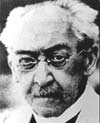The KWImF was conceived during Germany’s golden era of scientific development
The opening of the Kaiser Wilhelm Institute for Medical Research (KWImF) was the culmination of years of intensive planning and organizational efforts by Ludolf von Krehl. Krehl was one of the earliest promoters of the integration of discrete disciplines of the natural sciences under the rubric of medical research. Today, we may take such an approach for granted, but at the time the KWImF was founded, this was a remarkably novel idea. Perhaps the only comparable institute in the world was the Rockefeller Institute in New York. Certainly, there were none in Germany.
Krehl deserves the lion’s share of credit for tirelessly pursuing this vision. Of course, his plans for the Institute were not formulated in an intellectual vacuum. Instead, they evolved during one of the most progressive and productive periods in the history of science – the first quarter of the 20th century. Major advances in physics, biology and chemistry in Germany created an aura of excitement that greatly shaped both Krehl’s plans and the approaches of the scientists who were to participate in the research of KWImF. During the latter part of the 19th century, the world center of science and technology had gradually shifted away from England and France to Germany. A primary factor in this transition was the unprecedented support by government and industry for the nation’s universities and technical institutes. As Germany’s academic reputation soared, many of the innovations its scientists generated were utilized in the young nation’s industrial and military development. And in turn, as Germany evolved into a world power, the practical advances in technology encouraged further government policy supporting scientific research.
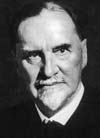
Ludolf von Krehl
Photo: Courtesy of Max-Planck-Institut für Medizinische Forschung
Germany’s scientific rise was first marked by major achievements in the fields of inorganic and organic chemistry, which helped to usher in a new era for physiological chemistry. The influential school of Adolf von Baeyer, which included such luminaries as Paul Ehrlich, Emil Fischer, Richard Willstätter, Fritz Haber, Heinrich Wieland and Eduard Buchner, also took an early interest in the application of their knowledge of chemistry to biological materials. Their experimental methods, theories and results were essential forerunners to the discoveries that were later made in Heidelberg. Krehl and those who helped him shape the KWImF were closely connected to these scientists.
During the first two decades of the 20th century, scientists began to forcefully formulate the chemical reactions that occur within cells. The mechanisms of oxidation, respiration and fermentation in cellular processes were particularly important research topics during this time. The structural mechanisms of chemicals involved in these processes and the role of enzymes in stimulating biochemical reactions, for example, were just beginning to be systematically explored. Critical methodologies that scientists now take for granted were developed. For example, in vitro studies – the chemical demonstration of biological processes outside of the living cell – were first used to analyze the processes of yeast fermentation and metabolic pathways. The first exploitation of radiation in biological experimentation followed during the next decade. The application of the physical laws of thermodynamics and methods for the measurement of the transfer of biochemical energy in cells was also completely novel.
Ludolf von Krehl and his pioneering vision of multidisciplinary biological research
It was in this general context that medicine and the natural sciences began to interface for the first time. Physician-scientists Ludolf von Krehl, Gustav Embden and Carl Neuberg were early pioneers in this effort. Such men had a dual motivation: clearly they wished to apply as many basic scientific tools as possible in order to understand and potentially cure diseases, but they also believed that the study of pathological conditions might hold the key to understanding normal cellular functions.
Ludolf von Krehl had come to Heidelberg in 1906 as the Director of the University’s Medical Clinic. Krehl had already published a landmark textbook on Pathological Physiology and actively encouraged the physicians in his hospital to keep abreast of the newest developments in the natural sciences. He also made it a practice to always hire a few research scientists at the hospital. Between 1909 and 1912, Otto Warburg, Julian Huxley and Otto Meyerhof worked in his clinical laboratory. Each of these men went on to stellar careers that profoundly influenced the development of modern biology.
Despite highly interesting research results at his clinic, Krehl was aware of the limited professional opportunities that such a small laboratory offered and realized that high quality researchers could be expected to stay for only a very short time. After the departure of Warburg, Huxley and Meyerhof, Krehl began to make tentative plans for a full scale research institute that would be independent of his medical clinic. During the next decade, these plans evolved to include research departments in chemistry, physics, physiology, cell biology and pathology. Fortunately, Krehl was one of Germany’s most highly respected physicians. He was energetic, personable, and very wealthy. Finally, he was well connected to the elite of the German academic and scientific communities. Krehl played each of these cards astutely in his efforts to successfully promote his proposal for a new multidisciplinary institute.
Rallying support for Krehl’s proposal
Ludolf von Krehl approached his friend Adolf von Harnack, the President of the Kaiser Wilhelm Society (Kaiser Wilhelm Gesselschaft in German), about the possibility of the scientific organization supporting his proposed institute. With similar views about how science should be conducted, Harnack wholeheartedly supported the plan under the auspices of the KWG. Unfortunately, the First World War and subsequent disarray in Germany delayed the plan until the mid-twenties, at which time details were finally approved. After 1926, Krehl and Harnack worked rapidly to shape the new institute, with Krehl reaching out to his many personal contacts in search of strong directors of the individual institutes who would enthusiastically participate in the collaborative environment he envisioned. In addition to Harnack, Max Planck, Richard Willstätter, Heinrich Wieland, Otto Warburg and Emil Fischer actively counseled Krehl. By 1927, Krehl was prepared to make offers to the key scientists for the planned institute.
Krehl first called upon his former research assistant, Otto Meyerhof, to direct the KWImF’s Physiology Institute. Meyerhof had gained an international reputation since leaving Krehl’s clinic for his creativity in combining physics and chemistry in ground breaking studies of muscle metabolism. In 1922, he had won the Nobel Prize for Physiology. Unfortunately, due to politics and anti-Semitism, Meyerhof was unable to find a research position in Germany to match this stature. The KWG had come to his rescue in 1924, reuniting him with Otto Warburg in the latter’s KWI for Biology. But the position in Warburg’s KWI represented only a temporary solution for Meyerhof. Given his professional reputation and his personal familiarity with Krehl, Meyerhof was a welcomed addition as KWImF Director of the Physiology Institute.
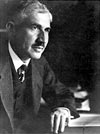 |
Otto Meyerhof Photo: Courtesy of Walther Meyerhof, son of Otto Meyerhof |
Otto Warburg strongly encouraged Krehl to offer the position in chemistry to a brilliant young organic chemist, Richard Kuhn, whose work on enzymes had recently begun to overlap with his own research. At the time, the choice was considered something of a gamble, because Kuhn was only 26 years old. On the other hand, he came highly recommended by Willstätter, still the most influential chemist in all of Germany, and Wieland. In fact, Kuhn already held a chair in General and Analytical Chemistry at the Federal Institute of Technology in Zurich and was rapidly gaining a reputation for his studies of the stereo chemistry of enzymes and natural pigments. Kuhn signed a contract with the KWG in May of 1928. A decade later, he proved the wisdom of this trust when he was awarded the Nobel Prize for chemistry.
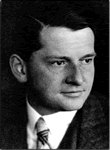
Richard Kuhn
Photo: Archiv zur Geschichte der Max-Planck-Gesselschaft, Berlin-Dahlem
Karl W. Hausser was chosen to direct the Physics Institute. Hausser had first come to Heidelberg in 1913 as a graduate student of Philipp Lenard, an early Nobel Prize winner and the powerful head of the Physics Institute of the University of Heidelberg. After graduating, Hausser had gained broad experience in industrial research, working extensively with X-rays at Telefunken and then, after military service during the First World War, as a group leader in the Medical Physics Laboratory of Siemens and Halske in Berlin. It was there that Hausser first began to straddle the border between physics and medicine with research on the origin of Erythemen and the effects of sunlight upon skin pigmentation. His enthusiasm for biological topics and the close match to Kuhn’s own interest in the chemistry of natural pigments made him a perfect candidate for the new KWImF.
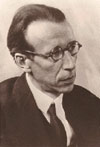 |
Karl W. Hausser Courtesy of Max-Planck-Institut für Medizinische Forschung |
Krehl planned to retire from his position at the University’s Medical Clinic as soon as the new Institute was built and preside over the overall KWImF operation during the start-up period (the task was to be rotated on an annual basis). He would also direct the Pathology Institute himself, which he envisioned as containing two sections: a small research group and a clinical ward of 20 beds which would provide a source of subject matter for his own research group and the other institutes. The early plans for a cell biology group were meanwhile dropped for lack of a suitable candidate.
By the middle of 1928, the four appointed heads of the proposed institutes were meeting with KWG officials and each other, exchanging correspondence regarding plans for the library and possible collaborations, negotiating budgets and submitting lists of required equipment.
Among the most powerful connections that Ludolf von Krehl relied upon in establishing the KWImF was his relationship with Adolf von Harnack. Although he was a theological scholar by training, Harnack was one of Germany’s most influential figures for the promotion of natural sciences.
In 1910, Harnack had collaborated with Emil Fischer, Walther Nernst and August von Wasserman to establish a new organization dedicated to the service of German society through the advancement of scientific research. Their original proposal for this organization emphasized basic principles for the cooperation of science, industry and government and included construction of a series of elite research institutes. The proposal underscored the importance of complete research freedom for its members, structurally supported by the award of lifetime contracts to a few carefully chosen research directors.
Harnack and his colleagues quickly garnered the personal backing of Kaiser Wilhelm II, who also provided a name for the Kaiser Wilhelm Society. They then successfully solicited the support of many of the nation’s leading industrialists and bankers. In fact, the KWG was formed with the then astronomical budget of 10 million marks.
Harnack was elected President and the first of the KWG’s institutes opened in 1911 in Berlin. Known for his liberal views, Harnack’s basic hiring principle was scientific ability first. He recruited some of the country’s most important scientific figures for the KWG’s original institutes, including Richard Willstätter, Otto Hahn, Lise Meitner, Ernst Beckmann, Fritz Haber, August von Wasserman and Albert Einstein. By the 1920s, the KWG was recognized as one of the most prestigious scientific organizations in the world.
The foundation of the Kaiser Wilhelm society
|
Adolf von Harnack Photo: Courtesy of the Archiv zur Geschichte der Max-Planck-Gesselschaft, Berlin-Dahlem |
Financing the KWImF during the chaos following WWI
Throughout this time, Krehl and Harnack were busy soliciting support to finance construction of a state-of-the-art research facility. Despite the KWG’s auspicious beginning, this was a major challenge in Germany during the 1920s. Stabilization of the German currency earlier in the decade had helped immensely by halting hyperinflation, but the country still suffered from massive debt for war reparations, as well as political and social instability. Moreover, the Germans were sensitive to the fact that France still occupied what was considered by many to be German territory west of the Rhine (this included Alsace, as well as areas that today belong to Germany).
The southern state of Baden, which lies east of the Rhine and under which Heidelberg was administered, was particularly hard hit and remained underdeveloped in comparison to the northern sections of the country – especially Prussia. Despite the reputation of the University of Heidelberg, Baden had seen little scientific investment since the end of the war. Regional prejudices were also part of the problem. The state of Baden was considered something of a backwater by the northern sections of the country. Even the KWG had refrained from placing any of its more than prestigious institutes south of Frankfurt and the Main River.
Local and regional officials in Baden, who lobbied for decentralization of national resources, were keen on lending their political support to the development of a KWI in Heidelberg. Its establishment, they hoped, would seed further scientific and industrial development in the south. The city of Heidelberg, therefore, donated a large plot of land for the project, while the state government of Baden agreed to give more than three-quarters of a million marks for construction of the building. This was a huge sum at the time and covered about half the necessary funds. Most of this money came from a special fund earmarked for development of “borderland” areas of the country. The remainder was provided by other national and regional organizations, including the forerunner of the German research ministry, the state of Prussia, ministries in Baden and the KWG itself.
The KWImF rises on the banks of the Neckar River
The construction site for the new KWImF was located at the western edge of Heidelberg on the north bank of the Neckar River. This area has since developed into the University of Heidelberg’s large new campus for science and medicine. At the time, however, it was an isolated semi-rural setting, surrounded on three sides by fruit orchards. In fact, at the time, the site was praised because the lack of traffic promised to keep down ground vibrations that might affect experimental conditions.
The well known architect Hans Freese was chosen to design the KWImF buildings. Krehl encouraged the development of an aesthetic design and amenities for the KWImF staff, but Freese’s primary assignment was to maximize the scientific productivity of the laboratories. To this end, Kuhn, Meyerhof and Hausser worked closely with Freese to customize the plans. In fact, Kuhn became so involved in the design phase that he insisted on locating light switches in his wing of the institute.
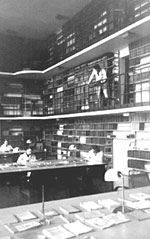 |
The KWImF library in 1938 Photo: Courtesy of Irmgard Weiland |
Construction began in 1928 and, considering the still fragile economic situation in Germany, the building phase went smoothly. The four research institutes were arranged separately in wings that spread from a central core in the form of the letter H, with each of the laboratories fitted out with the latest scientific equipment. The KWImF library, common seminar rooms and administrative offices were located in a central cross bar of the H in order to facilitate interdepartmental interaction. The library, with its large, open three-story hall, was the crowning jewel of the building, and the four directors were given enough money to line it with a collection of some 70,000 books and journals. Freese also designed a guest house next to the institute to provide housing for guest scientists and a small number of the scientific staff who would provide assistance in case of an emergency at the laboratory. Finally, the plans included the construction of fine homes for each of the KWImF directors. These were located within easy walking distance of the institute.
There were some glitches and compromises, such as the use of red brick rather than the expensive red sandstone that is so typical of Heidelberg architecture. Yet, Kuhn, Hausser and Meyerhof began work in magnificent new laboratories. This was partially due to Krehl’s successful efforts to solicit supplementary funds, including the support of the German chemical company IG Farbenindustrie and the Rockefeller Foundation in the United States. Nevertheless, cost overruns did have an impact on the overall project, most notably affecting the development of Krehl’s Pathology Institute. In a remarkably selfless gesture, Krehl cut his own budget, then postponed construction of his clinical ward so that facilities for Kuhn, Meyerhof and Hausser would be completed on time. Unfortunately, this choice prevented Krehl from immediately resigning his position from the University of Heidelberg Medical Clinic and turning his full attention to scientific development at the Pathology Institute.
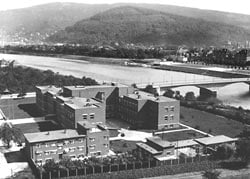
A view of the newly opened KWImF with Heidelberg in the background.
Photo: Courtesy of the Archiv zur Geschichte der Max-Planck-Gesselschaft, Berlin-Dahlem
Kuhn, Meyerhof and Hausser moved into their new laboratories at the end of 1929, Kuhn arriving first at the beginning of October. Each director brought a number of assistants with him, enabling both continuity and a rapid start-up of research. Kuhn, Meyerhof and Hausser were also provided with generous budgets to immediately expand the size of their groups and the scope of their work. Krehl administered the overall institute from his office at the University’s Medical Clinic and moved a small pathology research group into the KWImF in early 1930.
The opening of theinstitute was believed to signal a scientific renaissance for Southwestern Germany
The official KWImF opening ceremony took place on May 27, 1930. It was a joyful occasion for Ludolf von Krehl, who stood proudly beside his three fellow directors and Adolf von Harnack (tragically, Harnack became ill during this visit to Heidelberg and died two weeks later). Speeches by the President of the state of Baden, the Mayor of Heidelberg and the Rector of University of Freiburg were full of patriotic references to the fatherland and boldly predicted a ripple effect that would spread science and technology across southern Germany.
